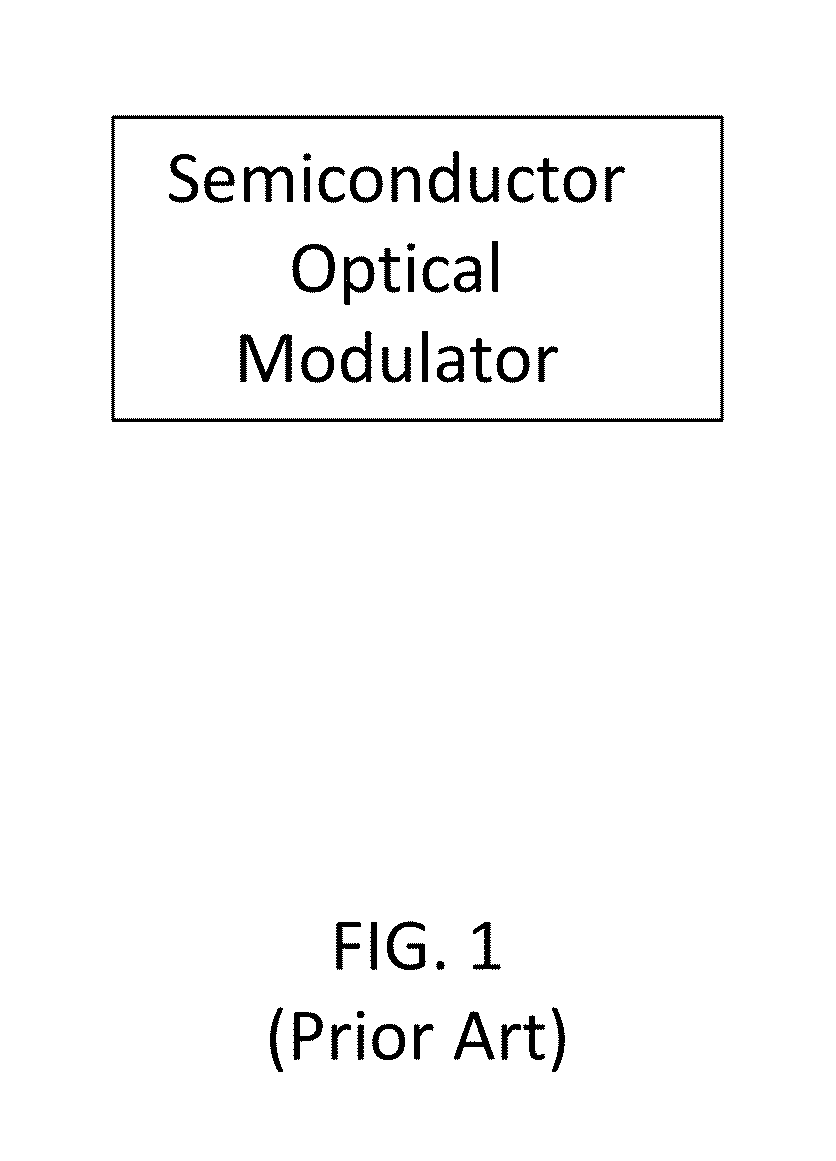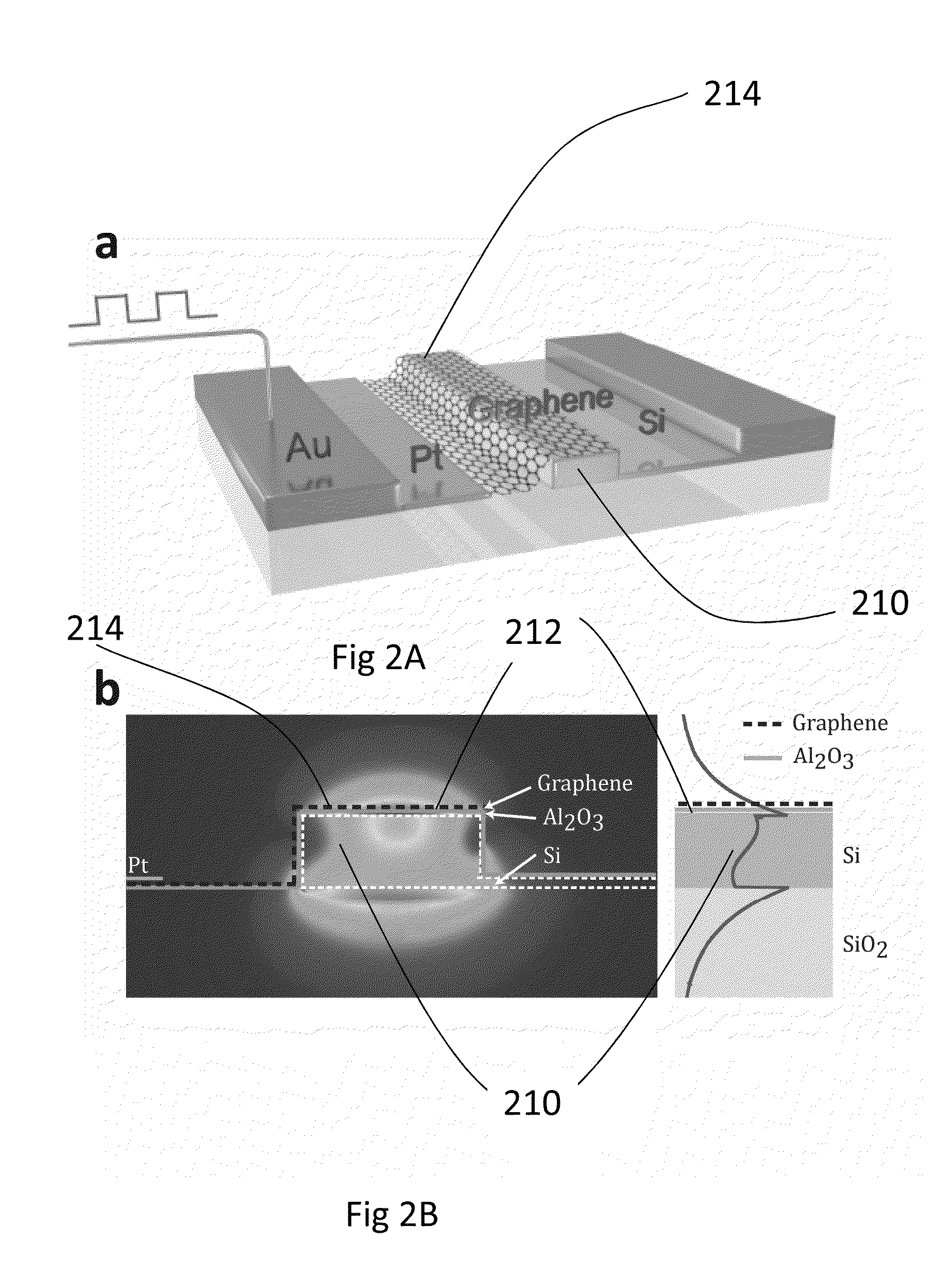Graphene based optical modulator
- Summary
- Abstract
- Description
- Claims
- Application Information
AI Technical Summary
Benefits of technology
Problems solved by technology
Method used
Image
Examples
example 1
Single Layer Graphene Optical Modulator
[0043]The present invention provides a waveguide-integrated graphene-based modulator that includes actively tuning the Fermi level of a monolayer graphene sheet. The gigahertz graphene modulator demonstrates a strong electro-absorption (EA) modulation of 0.1 dB / μm and operates over a broad range of wavelength from 1.35 μm to 1.6 μm under ambient conditions.
[0044]The structure of the EA modulator is schematically illustrated in FIG. 2A and FIG. 2B. A 50-nm-thick Si layer was used to connect the 250-nm-thick Si bus waveguide 210 and one of the gold electrodes. Both the silicon layer and waveguide 210 were doped with boron to reduce the sheet resistance (boron doped spin-on-glass, 850° C., 180 sec.). Seven-nm-thick Al2O3 was then uniformly deposited on the surface of waveguide 210 by atomic layer deposition (ALD) as spacer 212. A graphene sheet 214 grown by chemical vapor deposition (CVD) was then mechanically transferred onto the Si waveguide 210...
example 2
Multi-Layer Graphene Optical Modulator
[0059]This example provides a multi-layer graphene optical modulator at high modulation depth (˜0.16 dB / μm). By using two graphene layers 214 and 216 to form a p-oxide-n like junction, embodiments of the present invention avoid the insertion loss from doped silicon and can potentially work at high frequency.
[0060]The structure of an embodiment of the present invention is schematically illustrated in FIG. 2C and FIG. 2D. In an exemplary embodiment, the fabrication of the embodiment of the present invention starts with commercial silicon-on-insulator (SOI) wafers, with a device layer thickness of 340 nm, and a buried-oxide thickness of 2 μm. A 400 nm-wide silicon waveguide 220 with both ends connected to a pair of grating couplers (period=780 nm, optimized for λ=1537 nm) was fabricated using deep reactive-ion etch (DRIE). Atomic layer deposition (ALD) technique was then employed to conformally coat a 5 nm thick Al2O3 isolation layer to prevent pot...
PUM
 Login to View More
Login to View More Abstract
Description
Claims
Application Information
 Login to View More
Login to View More - R&D
- Intellectual Property
- Life Sciences
- Materials
- Tech Scout
- Unparalleled Data Quality
- Higher Quality Content
- 60% Fewer Hallucinations
Browse by: Latest US Patents, China's latest patents, Technical Efficacy Thesaurus, Application Domain, Technology Topic, Popular Technical Reports.
© 2025 PatSnap. All rights reserved.Legal|Privacy policy|Modern Slavery Act Transparency Statement|Sitemap|About US| Contact US: help@patsnap.com



